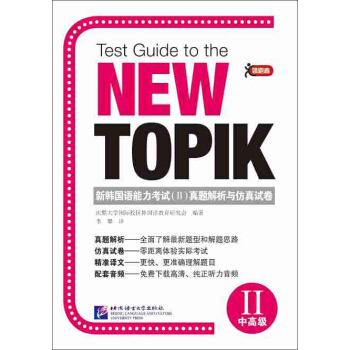

具体描述
内容简介
《新编语言学教程》以《高等学校英语专业英语教学大纲》为基本依据,参考借鉴大量国内外同类教材,具有以下主要特点:内容丰富,重点突出。涵盖语言学领域的核心内容;反映当代语富学的最新理论和研究成果;注重可操作性,讲练结合,便于教授和学习;语言简明生动,深入浅出,富有启发性。目录
ContentsChapter 1 Introduction
1.1 Linguistics
1.1.1 Definition of linguistics
1.1.2 Linguistics versus traditional grammar
1.1.3 Use of studying linguistics
1.1.4 Scope of linguistics
1.2 Language
1.2.1 Definition of language
1.2.2 Origin of language
1.2.3 Design features of language
1.2.4 Functions of language
1.3 Some Major Concepts in Linguistics
1.3.1 Descriptive and prescriptive grammars
1.3.2 Synchronic and diachronic linguistics
1.3.3 Langue and parole
1.3.4 Competence and performance
1.3.5 Syntagmatic and paradigmatic relations
1.3.6 Functionalism and formalism
Exercises and Discussion Questions
Sources and Suggestions for Further Reading
Supplementary Readings
Chapter 2 The Sounds of Language
2.1 Introduction
2.2 Phonetics
2.2.1 Articulators and their functions
2.2.2 Voiced and voiceless sounds
2.2.3 Nasal and oral sounds
2.2.4 Classification of English speech sounds
2.2.4.1 English consonants
2.2.4.2 English vowels
2.2.5 Variations of sounds
2.2.5.1 Liaison
2.2.5.2 Elision and assimilation
2.3 Phonology
2.3.1 Phonemes: the phonological units of language
2.3.2 Minimal pairs and sets
2.3.3 Free variation
2.3.4 Distinctive features
2.3.5 Syllables and consonant clusters
2.3.6 Suprasemental features
2.3.6.1 Stress
2.3.6.2 Intonation
Exercises and Discussion Questions
Sources and Suggestions for Further Reading
Supplementary Readings
Chapter 3 Morphology
3.1 Introduction
3.2 Morphemes
3.2.1 Free morphemes
3.2.2 Bound morphemes
3.3 Morphs and AIIomorphs
3.4 Types of Word Formation
3.4.1 Compounding
3.4.2 Derivation
3.4.3 Other ways of word formation
3.4.3.1 Conversion
3.4.3.2 Backformation
3.4.3.3 Clipping
3.4.3.4 Blending
3.4.3.5 Acronym
3.4.3.6 Initialism
Exercises and Discussion Questions
Sources and Suggestions for Further Reading
Supplementary Readings
Chapter 4 Syntax
4.1 Introduction
4.2 Word classes
4.3 The Prescriptive Approach
4.4 The Descriptive Approach
4.4.1 Structural analysis
4.4.2 Immediate constituent analysis
4.5 Constituent Structure Grammar
4.6 Transformational Grammar
4.7 Systemic Functional Grammar
Exercises and Discussion Questions
Sources and Suggestions for Further Reading
Supplementary Readings
Chapter 5 Semantics
5.1 Definition of Semantics
5.2 Approaches to Meaning
5.2.1 Meaning as naming
5.2.2 Meaning as concept
5.2.3 Meaning as behavior
5.2.4 Meaning as context
5.2.5 Meaning as truth conditions
5.3 Word Meaning
5.3.1 Sense and reference
5.3.2 Seven types of meaning
5.3.2.1 Conceptual meaning
5.3.2.2 Connotative meaning
5.3.2.3 Social meaning
5.3.2.4 Affective meaning
5.3.2.5 Reflective meaning
5.3.2.6 Collocative meaning
5.3.2.7 Thematic meaning
5.3.3 Semantic fields
5.3.4 Componential analysis
5.3.5 Semantic relationships between words
5.3.5.1 Homonymy
5.3.5.2 Polysemy
5.3.5.3 Homophony
5.3.5.4 Synonymy
5.3.5.5 Antonymy
5.3.5.6 Hyponymy
5.3.5.7 Meronymy
5.4 Sentence Meaning
5.4.1 Sentence and proposition
5.4.2 Semantic roles
5.4.3 Semantic relationships between sentences
5.4.3.1 Entailment
5.4.3.2 Presupposition
5.4.3.3 Synonymy
5.4.3.4 Inconsistency
5.4.3.5 Implicature
Exercises and Discussion Questions
Sources and Suggestions for Further Reading
Supplementary Readings
Chapter 6 Pragmatics
6.1 Introduction
6.2 Micropragmatics
6.2.1 Reference
6.2.2 Deixis
6.2.3 Anaphora
6.2.4 Presupposition
6.3 Macropragmatics
6.3.1 Speech act theory
6.3.1.1 Illocutionary acts
6.3.1.2 Classification of illocutionary acts
6.3.1.3 Indirect speech acts
6.3.2 The Cooperative Principle
6.3.2.1 The Cooperative Principle and its maxims
6.3.2.2 Conversational implicatures
6.3.3 The Politeness Principle
Exercises and Discussion Questions
Sources and Suggestions for Further Reading
Supplementary Readings
Chapter 7 Discourse Analysis
7.1 Discourse and Discourse Analysis
7.2 Information Structure
7.2.1 Given and new information
7.2.2 Topic and comment
7.2.3 Contrast
7.3 Cohesion and Coherence
7.3.1 Cohesion
7.3.1.1 Reference
7.3.1.2 Substitution
7.3.1.3 Ellipsis
7.3.1.4 Conjunction
7.3.1.5 Lexical cohesion
7.3.2 Coherence
7.4 Discourse Markers
7.5 Conversational Analysis
7.5.1 Adjacency pairs
7.5.2 Preference structure
7.5.3 Presequences
7.6 Critical Discourse Analysis
Exercises and Discussion Questions
Sources and Suggestions for Further Reading
Supplementary Readings
Chapter 8 Sociolinguistics
8.1 Introduction
8.2 Language Varieties
8.2.1 Standard language
8.2.2 Dialects
8.2.3 Registers
8.2.4 Pidgins and creoles
8.2.5 Language planning
8.3 Choosing a Code
8.3.1 Diglossia
8.3.2 Bilingualism and multilingualism
8.3.3 Code-switching
8.4 Linguistic Taboos and Euphemisms
8.5 Language and Gender
Exercises and Discussion Questions
Sources and Suggestions for Further Reading
Supplementary Readings
Chapter 9 Psycholinguistics
9.1 Introduction
9.2 Language Acquisition
9.3 Language Production
9.3.1 Conceptualization
9.3.2 Formulation
9.3.3 Articulation
9.3.4 Self-regulation
9.4 Language Comprehension
9.4.1 Sound comprehension
9.4.2 Word comprehension
9.4.3 Sentence comprehension
9.4.4 Text comprehension
9.5 Language and Thought
9.5.1 Language determines thought
9.5.2 Thought determines language
Exercises and Discussion Questions
Sources and Suggestions for Further Reading
Supplementary Readings
Chapter 10 Cognitive Linguistics
10.1 Introduction
10.2 Categorization and Categories
10.2.1 The classical theory
10.2.2 Prototype theory
10.2.3 Levels of categorization
10.3 Conceptual Metaphor and Metonymy
10.3.1 Conceptual metaphor
10.3.2 Conceptual metonymy
10.4 Iconicity
10.4.1 Iconicity of order
10.4.2 Iconicity of distance
10.4.3 Iconicity of complexity
10.5 Grammaticalization
Exercises and Discussion Questions
Sources and Suggestions for Further Reading
Supplementary Readings
Chapter 11 Language Acquisition
11.1 First Language Acquisition
11.1.1 The behaviorist approach
11.1.2 The innateness approach
11.1.3 Stages of acquiring the first language
11.2 Second Language Acquisition
11.2.1 Contrastive analysis
11.2.2 Error analysis
11.2.3 Interlanguage
11.3 Individual Differences in Second Language Acquisition
11.3.1 Language aptitude
11.3.2 Cognitive style: field dependence and field independence
11.3.3 Personality traits
11.3.4 Learning strategies
11.4 Instruction and L2 Acquisition
11.4.1 Form-focused instruction
11.4.2 Learner-instruction matching
11.4.3 Strategy training
Exercises and Discussion Questions
Sources and Suggestions for Further Reading
Supplementary Readings
Chapter 12 Applied Linguistics
12.1 Introduction
12.2 Language Teaching
12.2.1 The grammar-translation method
12.2.2 The direct method
12.2.3 The audiolingual method
12.2.4 Situational language teaching
12.2.5 Functional language teaching
12.2.6 Communicative language teaching
12.2.7 Other approaches
12.3 Testing
12.3.1 The main types of language tests
12.3.2 Principles of language testing
12.4 Summary
Exercises and Discussion Questions
Sources and Suggestions for Further Reading
Supplementary Readings
Glossary
Index
用户评价
我发现这本书在理论深度上拿捏得非常到位,它没有陷入那种故作高深的术语泥潭,而是用一种极为贴近实际的视角去阐述那些抽象的语言学概念。记得有一次我被某个理论卡住许久,翻阅了手头几本旧教材都不得要领,直到接触到这本书的相应章节,茅塞顿开。作者似乎有一种魔力,能将那些原本枯燥乏味的规则和模型,转化为生动的故事和鲜活的例子。特别是它对特定语境下语言现象的剖析,细致入微,让人不得不佩服其考察的严谨性。它不仅仅是在“告诉”你是什么,更是在“引导”你去思考为什么会是这样。这种探究式的叙述方法,极大地激发了我主动学习的内驱力,让我从被动接受知识,转变为主动构建知识体系。这种对认知过程的尊重,是衡量一本优秀教材的关键标准之一,而这本书无疑做到了。
评分这部作品的排版着实让人眼前一亮,不同于市面上那些墨守成规的教材,它在视觉呈现上似乎下了一番苦功。封面设计简洁却不失深度,拿到手里就有一种想要立刻翻阅的冲动。内页的字体选择和行间距处理得非常人性化,长时间阅读下来,眼睛的疲劳感明显减轻了不少。更值得称赞的是,编排逻辑非常清晰流畅,章节之间的过渡自然得像是水到渠成,不像有些书那样生硬地堆砌知识点,让人感觉作者真的是站在读者的角度,精心雕琢了每一个细节。尤其是一些复杂概念的图示部分,绘制得极其精妙,用最直观的图形语言辅助理解,这对于初学者来说简直是福音。可以说,这本书的装帧设计本身,就已经算得上是一件艺术品了,让人爱不释手,愿意时常把它摆在书架最显眼的位置。这种对“阅读体验”的重视,在学术类书籍中是相当少见的,也体现了出版方对读者群体的尊重。
评分如果说知识的准确性是基石,那么语言的驾驭能力就是这本书的灵魂。作者在行文遣词上展现了令人惊叹的专业素养和优雅的文笔。语句的组织错落有致,时而铿锵有力,如同严谨的逻辑推导;时而又如涓涓细流,润物无声地阐释复杂概念。阅读过程几乎没有遇到任何因晦涩表达而产生的挫败感,这对于处理复杂学科内容的书籍来说,是极大的挑战。它证明了学术性与可读性之间并非鱼与熊掌不可兼得的关系。这种高水准的写作风格,不仅有效地传达了知识,更是在无形中为读者树立了一个典范,示范了如何清晰、准确而又富有魅力的进行学术表达。这种潜移默化的影响,对于提升我自身的学术写作水平,是无法用价值衡量的收获。
评分读完这本书的某些章节后,我常常会产生一种想要立刻找人讨论一番的冲动。这绝对不是一本可以被束之高阁、只看不碰的“工具书”,它更像是一个循循善诱的良师益友。作者在论述中埋藏了许多引人深思的“小陷阱”和“开放性问题”,迫使读者不断停下来审视自己的既有认知。比如,在讨论某一语言变体的社会心理因素时,书中引用的案例选取非常巧妙,既具有跨文化的可比性,又贴近我们日常生活的经验。这种设计使得理论不再是脱离现实的空中楼阁,而是扎根于社会互动之中的鲜活有机体。对我而言,它提供了一个绝佳的平台,让我能够将课堂上学到的知识,立刻投射到对现实世界的观察和理解上,这对于培养批判性思维至关重要,也是我最为看重的一点。
评分这本书的广度令人印象深刻,它似乎有意打破传统语言学分支的壁垒,进行了一场跨学科的对话。我注意到它在讨论句法结构时,会不经意地引入认知科学的最新发现,而在阐述语义学时,又巧妙地结合了计算语言学的某些模型。这种融合并非简单的元素拼凑,而是一种深层次的结构性整合,使得整部著作呈现出一种更加宏大且自洽的知识体系。对于一个渴望全面了解语言学图景的学习者来说,这种全景式的视野实在太过珍贵。它避免了让读者陷入单一视角论断的局限,让我们看到了语言学作为一门复杂学科,其包容性和动态发展的潜力。这种视野的开阔,远超出了我对一本入门或进阶教材的初始预期。
评分是自己想要的书
评分比书店买方便,快递速度快。
评分质量不错,内容还行,教材用书
评分在书店看上了这本书一直想买可惜太贵又不打折,回家决定上京东看看,果然有折扣。毫不犹豫的买下了,京东速度果然非常快的,从配货到送货也很具体,快递非常好,很快收到书了。书的包装非常好,没有拆开过,非常新,可以说无论自己阅读家人阅读,收藏还是送人都特别有面子的说,特别精美;各种十分美好虽然看着书本看着相对简单,但也不遑多让,塑封都很完整封面和封底的设计、绘图都十分好画让我觉得十分细腻具有收藏价值。书的封套非常精致推荐大家购买。 打开书本,书装帧精美,纸张很干净,文字排版看起来非常舒服非常的惊喜,让人看得欲罢不能,每每捧起这本书的时候 似乎能够感觉到作者毫无保留的把作品呈现在我面前。 作业深入浅出的写作手法能让本人犹如身临其境一般,好似一杯美式咖啡,看似快餐,其实值得回味 无论男女老少,第一印象最重要。”从你留给别人的第一印象中,就可以让别人看出你是什么样的人。所以多读书可以让人感觉你知书答礼,颇有风度。 多读书,可以让你多增加一些课外知识。培根先生说过:“知识就是力量。”不错,多读书,增长了课外知识,可以让你感到浑身充满了一股力量。这种力量可以激励着你不断地前进,不断地成长。从书中,你往往可以发现自己身上的不足之处,使你不断地改正错误,摆正自己前进的方向。所以,书也是我们的良师益友。 多读书,可以让你变聪明,变得有智慧去战胜对手。书让你变得更聪明,你就可以勇敢地面对困难。让你用自己的方法来解决这个问题。这样,你又向你自己的人生道路上迈出了一步。 多读书,也能使你的心情便得快乐。读书也是一种休闲,一种娱乐的方式。读书可以调节身体的血管流动,使你身心健康。所以在书的海洋里遨游也是一种无限快乐的事情。用读书来为自己放松心情也是一种十分明智的。 读书能陶冶人的情操,给人知识和智慧。所以,我们应该多读书,为我们以后的人生道路打下好的、扎实的基础!读书养性,读书可以陶冶自己的性情,使自己温文尔雅,具有书卷气;读书破万卷,下笔如有神,多读书可以提高写作能力,写文章就才思敏捷;旧书不厌百回读,熟读深思子自知,读书可以提高理解能力,只要熟读深思,你就可以知道其中的道理了;读书可以使自己的知识得到积累,君子学以聚之。总之,爱好读书是好事。让我们都来读书吧。 其实读书有很多好处,就等有心人去慢慢发现. 最大的好处是可以让你有属于自己的本领靠自己生存。 最后在好评一下京东客服服务态度好,送货相当快,包装仔细!这个也值得赞美下 希望京东这样保持下去,越做越好
评分全英的,比较难懂,考研要考
评分通俗易懂,语句简单,如果概括性更强更佳
评分还没看,这是考试用书 质量不错
评分清晰明了!值得买!考研就靠它了!
评分老婆上学用的书 不买不行呀 呵呵呵呵
相关图书
本站所有内容均为互联网搜索引擎提供的公开搜索信息,本站不存储任何数据与内容,任何内容与数据均与本站无关,如有需要请联系相关搜索引擎包括但不限于百度,google,bing,sogou 等
© 2025 book.idnshop.cc All Rights Reserved. 静思书屋 版权所有

![体验英语少儿阅读文库 setD 小小文学(第7级)(适合12-14岁)(套装共6册+MP3) [12-14岁] pdf epub mobi 电子书 下载](https://pic.tinynews.org/10834335/4f66c8ad-a88f-43a1-b4ec-035947e4e606.jpg)




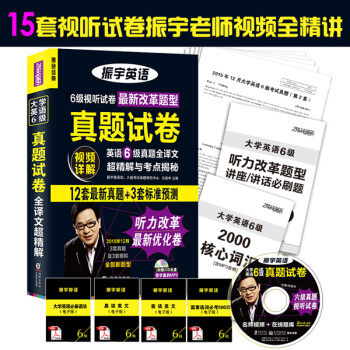
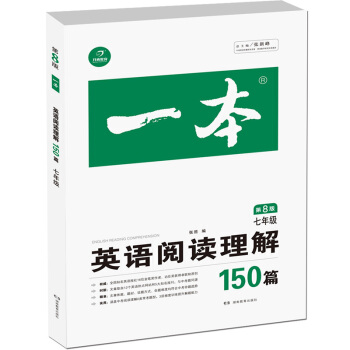
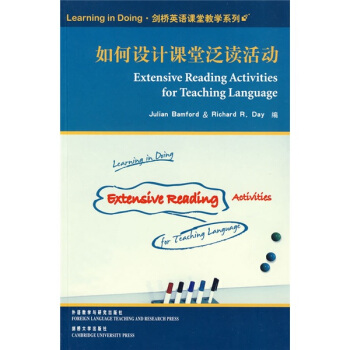

![世界名著典藏系列:汤姆·索亚历险记哈克贝利·芬历险记(英文全本) [The Adventures of Tom Sawyer & Huckleberry Finn] pdf epub mobi 电子书 下载](https://pic.tinynews.org/10096614/rBEDik_RuH4IAAAAAAERY9AW4tgAAAfjAHs8JAAARF7537.jpg)
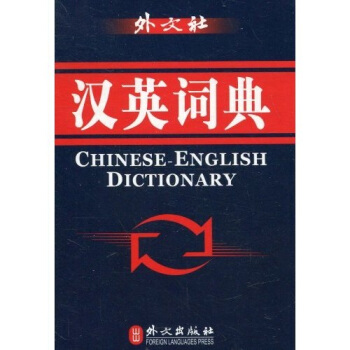
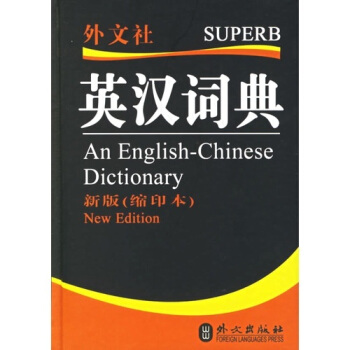
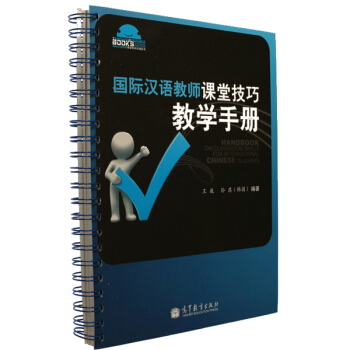
![英语专业8级考试单项突破系列:翻译与写作 [Towards Success In Tem8] pdf epub mobi 电子书 下载](https://pic.tinynews.org/10878619/c665c256-b95a-4bf1-b24a-bad21f021790.jpg)


